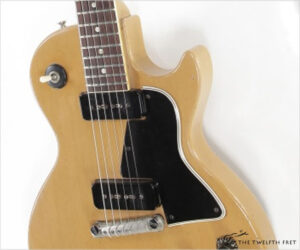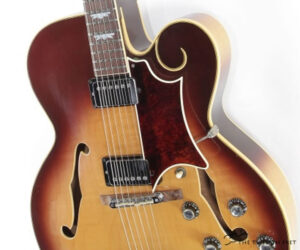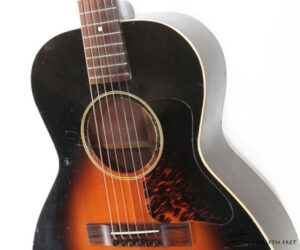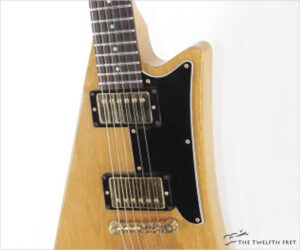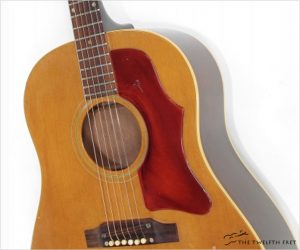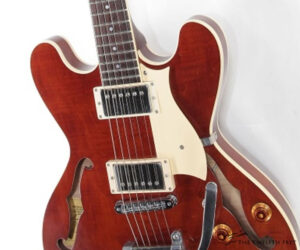The Gibson Les Paul Special TV model appeared in 1955, with the ‘TV’ referring to a special ‘limed’ finish intended to make the guitar more visible on black and white televisions and films. This finish had become available in 1954 on the Les Paul TV, a single-pickup Les Paul Junior. Both models used a slab Mahogany body with no Maple cap, and a Mahogany neck, with a bound Rosewood fingerboard, which into the mid 1960’s meant Brazilian Rosewood.
Michigan
This Gibson Tal Farlow is a rare model. Named after the renowned jazz guitarist Tal Farlow, who played Gibson guitars throughout the ’50s where this model was designed to meet Farlow’s demands for a guitar that combined superb playability with a rich, resonant tone.
This Gibson L-00 dates to 1934, with the L-00 built from 1932 to 1945 as the lowest cost L model. There have been some reissues of 1930’s models offered in the last decade. And yes, the ’00’ is two zeros. For being plain, the Gibson L-00 models are remarkably good sounding instruments with a very even representation throughout the tonal range. As with many Gibson models, the top is Spruce. The sides, back, neck, body blocks and linings are mahogany, and the bridge and unbound fingerboard are rosewood.
This instrument has sold
MORE →The Gibson J-50 ADJ Slope Shoulder Dreadnought models were produced in tandem with the better known J-45, with the difference being the J-50’s natural vs the J-45’s sunburst top. This sometimes meant that the J-50’s used visually higher grades of Spruce, but the two guitars are otherwise identical.
This instrument has sold
MORE →Heritage guitars, including the Heritage Prospect thinline archtop electric, are built at the historic Gibson plant in Kalamazoo, Michigan. These are very well made instruments, with a high level of consistent quality. The Heritage Prospect is based on the classic thinline semi-hollow archtop design pioneered in 1958 by Gibson with the ES-335.
This instrument has sold
MORE →